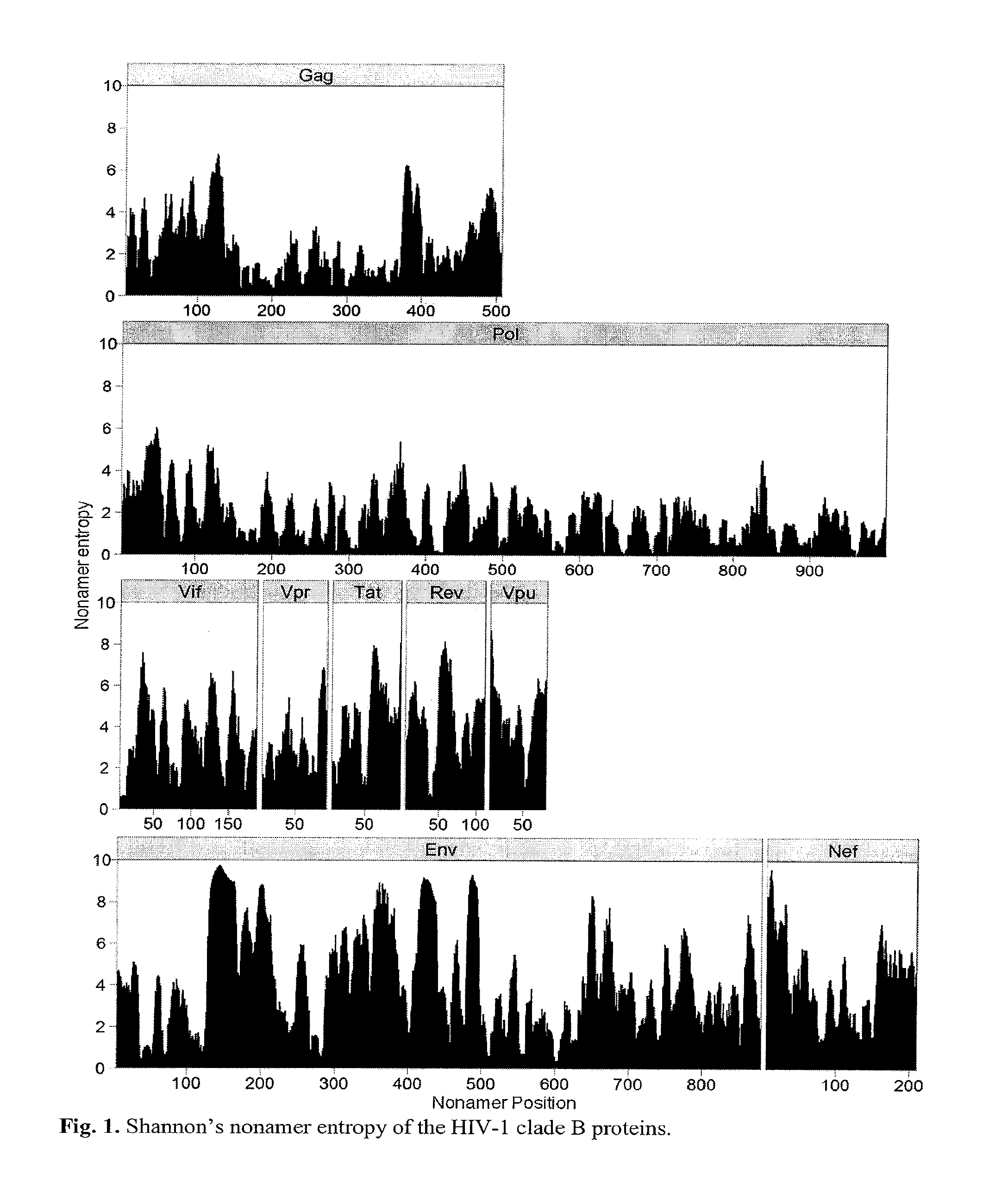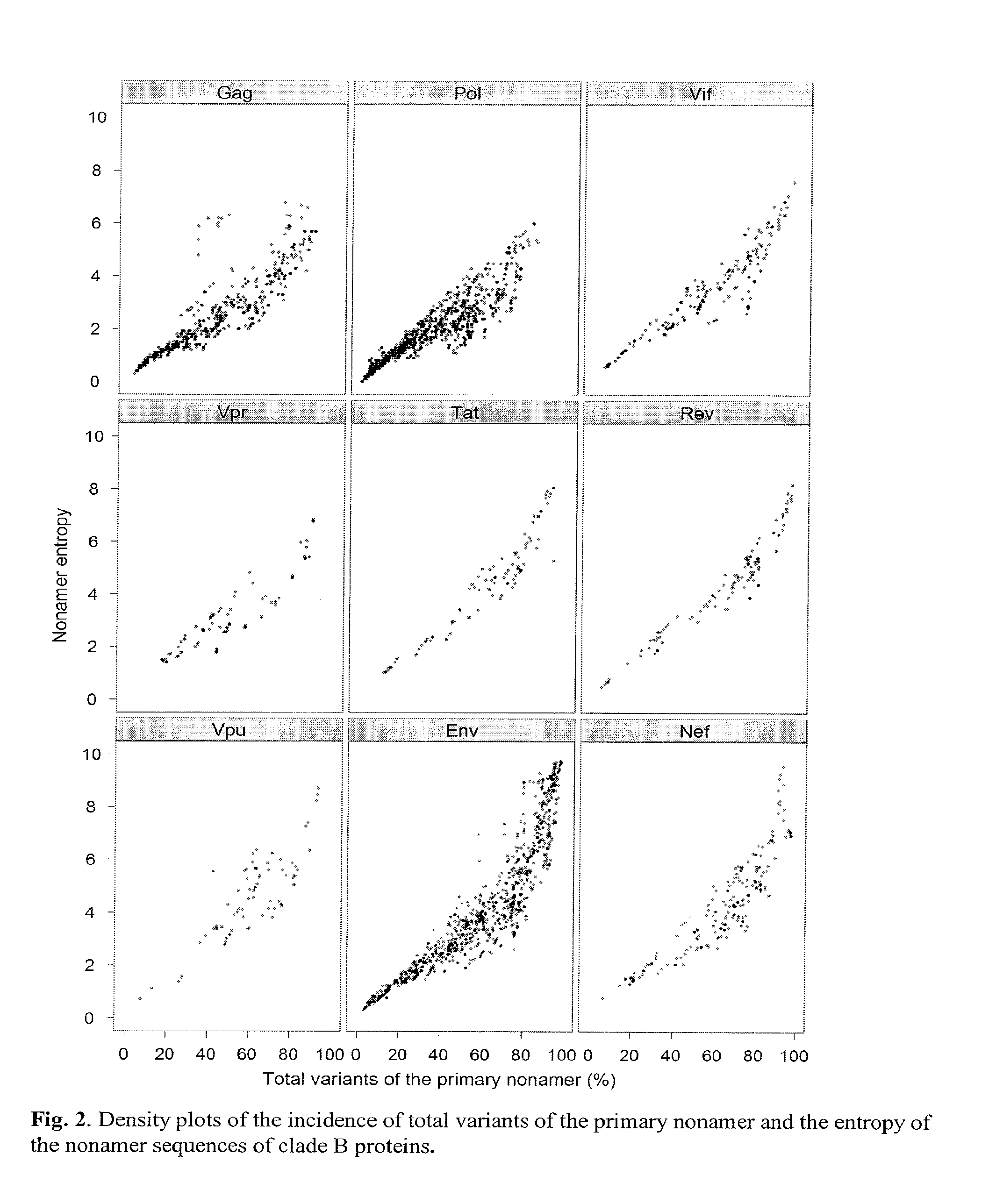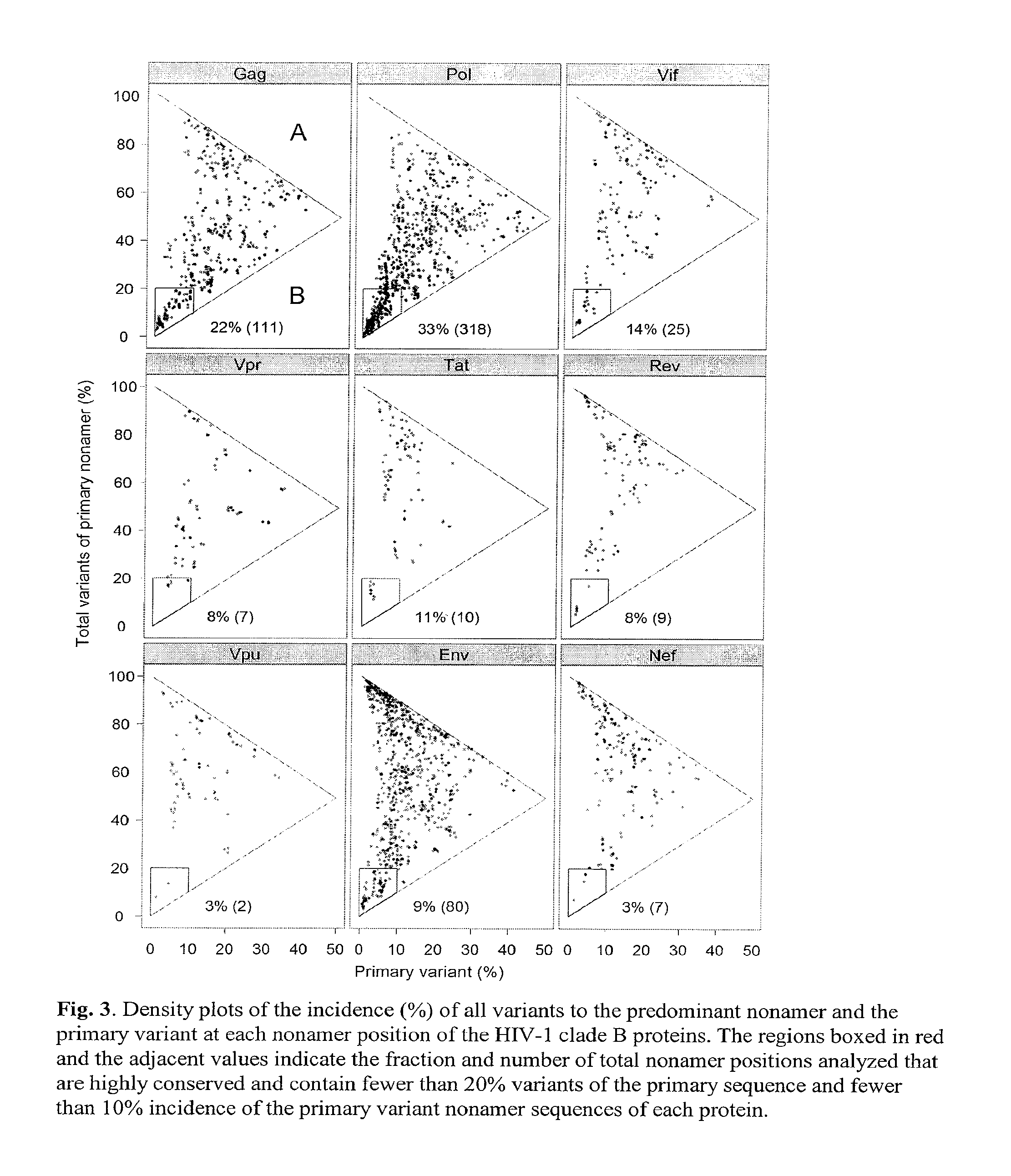Human immunodeficiency virus (hiv-1) highly conserved and low variant sequences as targets for vaccine and diagnostic applications
a human immunodeficiency virus and low variant sequence technology, applied in the field of vaccines and immunity, can solve the problems of limited escape from the immune response, and achieve the effect of reducing the risk, severity, symptoms, and/or duration of acquired immunodeficiency diseas
- Summary
- Abstract
- Description
- Claims
- Application Information
AI Technical Summary
Benefits of technology
Problems solved by technology
Method used
Image
Examples
example 1
Materials and Methods
Data Preparation, Selection and Alignment of HIV-1 Clade B Protein Sequences
[0030]HIV-1 protein sequence records were retrieved from the NCBI Entrez Protein Database in August 2008 by searching the NCBI taxonomy browser for HIV-1 (Taxonomy ID 11676). HIV-1 clade B specific entries were retrieved from the data collected via BLAST (version 2.2.18) searches (Altschul et al., 1990), using default parameters, with sample HIV-1 clade B protein sequences of the nine HIV-1 proteins from the HIV database (see website of Los Alamos National Laboratory (LANL) for HIV) as queries. Cutoff for the classification of each clade B protein was determined by manual inspection of the individual BLAST outputs. Duplicate sequences of each protein were removed and the remaining unique sequences, both partial and full length, were used for protein multiple sequence alignment. Alignment was difficult for some of the proteins because of the large number of diverse sequences, and thus dif...
example 2
HIV-1 Clade B Protein Datasets and Protein Alignment
[0039]A total of 58,052 sequences of the HIV-1 clade B proteome, over 1000 of each protein, were extracted from the NCBI Entrez Protein Database and aligned for the analysis of the evolutionary conservation and diversity (Table 1). Approximately 90% or the sequences were of the Gag, Pol, Env, and Nef proteins. The other 5 proteins almost equally shared the remaining 6513 sequences. Sequences of other clades were obtained from the HIV Sequence Database Web alignment. The clade C alignment contained almost 4000 sequences, between 300 and 600 of each protein. Clades A and D had few sequences. Duplicate sequences, either partial or full-length, were removed to eliminate the possible bias of redundant sequences derived from identical HIV-1 isolates sequenced by surveillance programs or large sequencing projects at specific sites.
TABLE 1HIV-1 sequences analysed.AminoNumber of sequencesProteinAcidsaClade AbClade BcClade CbClade DbGag50015...
example 3
Nonamer Peptide Conservation and Diversity
[0040]Shannon's entropy methodology, commonly applied to measure differences in single amino acid residues in the alignment of protein sequences, was modified to analyze each of the 3,133 nonamer positions, overlapping by eight amino acids, that represent all putative MHC binding cores of the of the HIV-1 clade B proteome. The average number of each of the nonamer sequences at a given protein position depended on the alignment of the sequences taken from the NCBI Entrez Protein Database, ranging from an average of 965 aligned sequences for Vpr and Vpu, to 5,558 for Pol (Table 2). Entropy of a nonamer sequence results from change of one or more of the 20 amino acids at a single site or at multiple sites of the 9 amino acid nonamer unit, with a maximum entropy of 39 if there were all possible changes of each amino acid (log2209). Because these units are overlapping, an amino acid at the 9th position will eventually move to the 1st as the nonam...
PUM
| Property | Measurement | Unit |
|---|---|---|
| Fraction | aaaaa | aaaaa |
| Fraction | aaaaa | aaaaa |
| Fraction | aaaaa | aaaaa |
Abstract
Description
Claims
Application Information
 Login to View More
Login to View More - R&D
- Intellectual Property
- Life Sciences
- Materials
- Tech Scout
- Unparalleled Data Quality
- Higher Quality Content
- 60% Fewer Hallucinations
Browse by: Latest US Patents, China's latest patents, Technical Efficacy Thesaurus, Application Domain, Technology Topic, Popular Technical Reports.
© 2025 PatSnap. All rights reserved.Legal|Privacy policy|Modern Slavery Act Transparency Statement|Sitemap|About US| Contact US: help@patsnap.com



